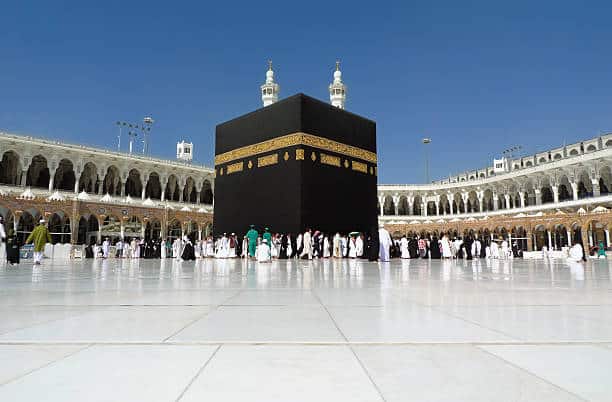DUA is an Arabic word that, in the context of Islam, literally refers to a prayer or an appeal to Allah. The Prophet Muhammad (SAW) declared that “Dua is the very essence of worship.” We are aware that Mecca is completely holy and that Allah’s blessings are bestowed there. Mecca and Medina serve as the primary pilgrimage sites for both the Hajj, which every Muslim is obliged to perform at least once in their lifetimes, and the ‘Umrah, a smaller pilgrimage that can be performed at any time of the year. However, there are some locations where Dua—the prayer directed specifically at Allah—is accepted. If you are a Muslim travelling for the Hajj or Umrah, research the finest spots to pray at these particular sites.
These 8 Places in Masjid al-Haram where Allah accept your duas right away. Find out about these places and pray at these specific locations.
Maqam e Ibrahim Inside Masjid Al-Haram is a holy area known as Maqam e Ibrahim. Offering two Rakats of prayer at the Maqam of Ibrahim is sunnah. You won’t ever get your duas denied here.
Safa and Marwah Safa and Marwah are the two hills where Muslims do their saee. The Saee is a series of seven runs between the hills performed in remembrance of Bibi Hajra, the prophet Ismail’s mother. A dua made during Saee is supposedly never refused.
Zam Zam well Although it is challenging to pray close to the Zam Zam well because of the water piper, one can still try because the well is blessed and prayers offered to the Zam Zam Well are always heard.
Mataf The area where tawaf is done surrounding the Ka’bah is particularly significant. All of your Duas are accepted when you do Tawaf in Mataf, according to numerous texts. Therefore, it is advised that instead of wasting your time chatting with others or taking selfies, you should instead make supplications for your loved ones and yourself.
Hajr-e-Aswad The holy Kaaba’s eastern corner houses Hajr-e-Aswad. It was given to Prophet Ibrahim (AS) to be placed in the corner of the Holy Kaaba and is also known as the Black Stone. It was brought down from Heaven (Jannah). Faced with this holy Black Stone, pilgrims begin and end their Tawaf rituals. If you ever have the chance to kiss the black stone, you should ask Allah for forgiveness and offer a du’a (supplication). It is one of the most auspicious locations in Masjid al-Haram where du’as (supplications) are accepted.
Hatwim or Hijr Ismail A low wall that was once a part of the Kaaba is called Hijr Ismail (Stone of Ismail), also known as Hatwim. The reward of worshipping at Hateem or Hijr Ismail is equal to praying inside the Holy Kaaba, according to the Prophet Muhammad (P.B.U.H.), because Hatwim is regarded as the inside of the Kaaba. Another location in Majid Al Haram where duas are permitted is Hijr Ismail or Hateem.
Inside of the Holy Kaabah The Holy Kaabah is the best location to offer dua. Pilgrims can do salah in Hateem since only authorised individuals are permitted to enter the sacred Kaabah. because it is a recognised component of the Holy Kaabah’s Ibrahimi foundation. The prayers offered inside the Kaaba are always heard.
Below Meezab-e-Rahmat Rainwater drips onto Hijr Ismail from the Meezab-e-Rahmat (Water outlet of Mercy), a gold spout situated close to the Holy Kaaba’s roof between Rukn-e-Iraqi and Rukn-e-Shami. Under Meezab-e-Rahmat, supplications are always granted.


